Would you like to see one of the largest Buddhas if you go on a trip to Thailand? Any tour of the most important temples in Bangkok worth its salt includes a visit to Wat Pho (its official name is unpronounceable: Wat Phra Chetuphon Vimolmangklaram Rajwaramahaviharn), a temple that is very popular for the enormous reclining Buddha it houses, a figure that occupies an entire pavilion and measures 46 meters long and 15 meters high.

Believe us when we say that it is worth going to see it; it is s-pec-ta-cu-lar in person. There is no excuse for not to go if you visit the Royal Palace, as it is located just 500 meters from the king’s residence and can be reached from one place to the other on foot.
Visiting both places can take you almost half a day, because they are very large places with several buildings. In fact, you can book a tour of essential Bangkok with tickets to visit this temple and many more, with a guide.
The origin of Wat Pho dates back to 1656 when a temple called Wat Podharam was built during the Ayutthaya period. In 1783, under the orders of Rama I, an oath-taking ceremony was held at this temple while the Grand Palace was being built, and at that time it was classified as a Royal monastery.
As the kings succeeded one another, the name of the place changed according to the whim of the current monarch. Thus, Rama III renamed it “Wat Phra Chetuphon Vimolmangklavas” and Rama IV christened it “Wat Para Chetuphon Vimolmangklaram”. Of course, all of them are equally difficult to pronounce.
In 1834, a major restoration that had lasted 16 years was completed, during which the grounds were expanded to include the Pavilion of the Reclining Buddha and the Misakawan Garden, and the library, Kanprian Hall and Crocodile Pond were restored.
Wat Pho is a vast complex made up of several buildings, gardens and structures, and houses a collection of Buddha images: Buddha Lokanat, Buddha Victorious over the Demon Mara, Buddha Chinarat, Buddha Chinnasri, Buddha Palilai and Buddha Sasda. But without a doubt the most admired is the enormous reclining Buddha, made of bricks and stucco, covered in gold leaf and with little feet three metres high.
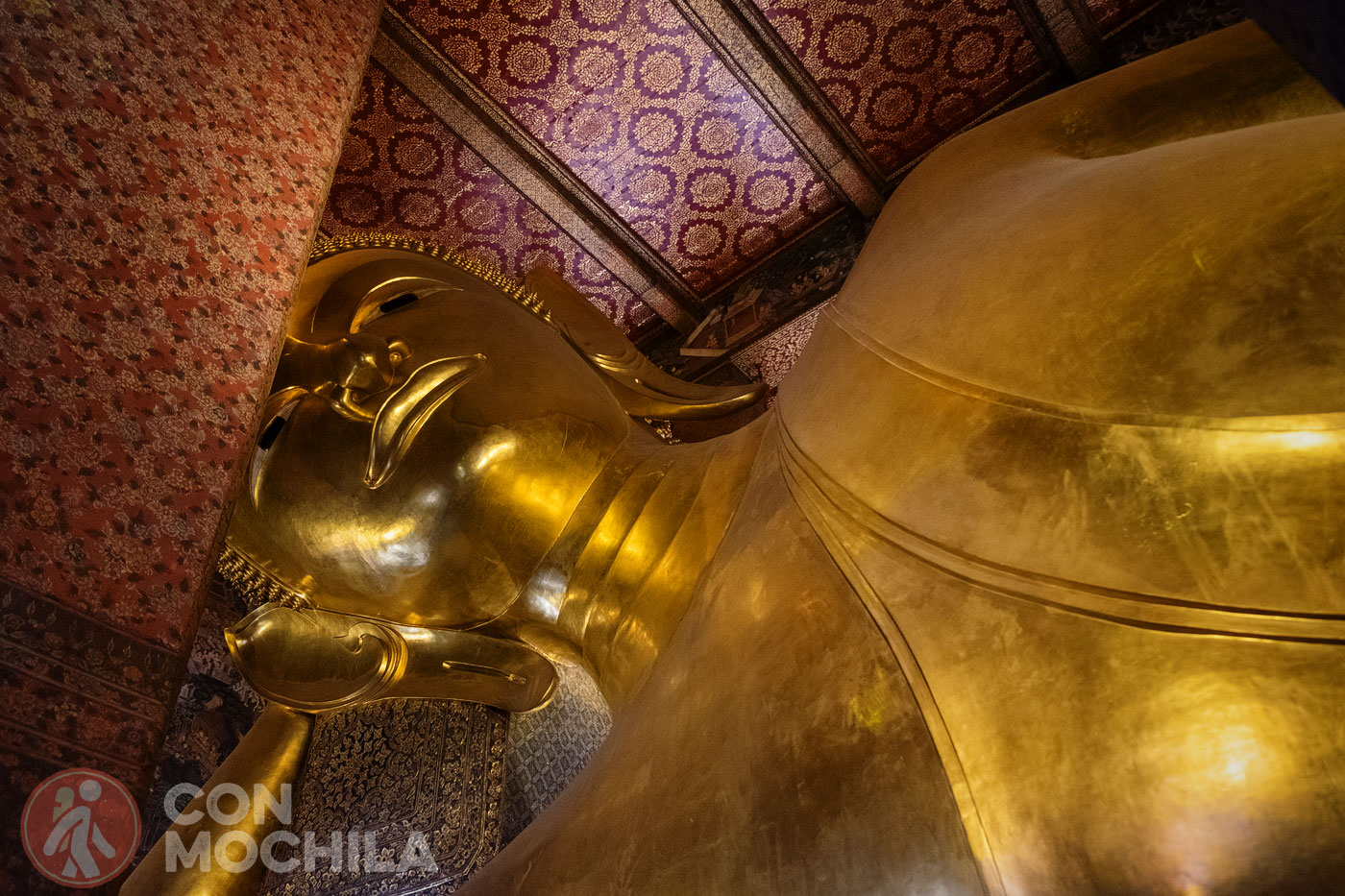
Located inside a secondary chapel (Phra Vihara), this gigantic image is the largest in Bangkok, so it barely fits inside the building, and people jostle to get a decent photo (which is quite difficult considering the narrow angle at which it is taken); around it there are 108 bronze tipping vessels.
Among the other buildings at Wat Pho there are four 42-meter-high chedies or stupas decorated with porcelain and vases as if they were a mosaic.
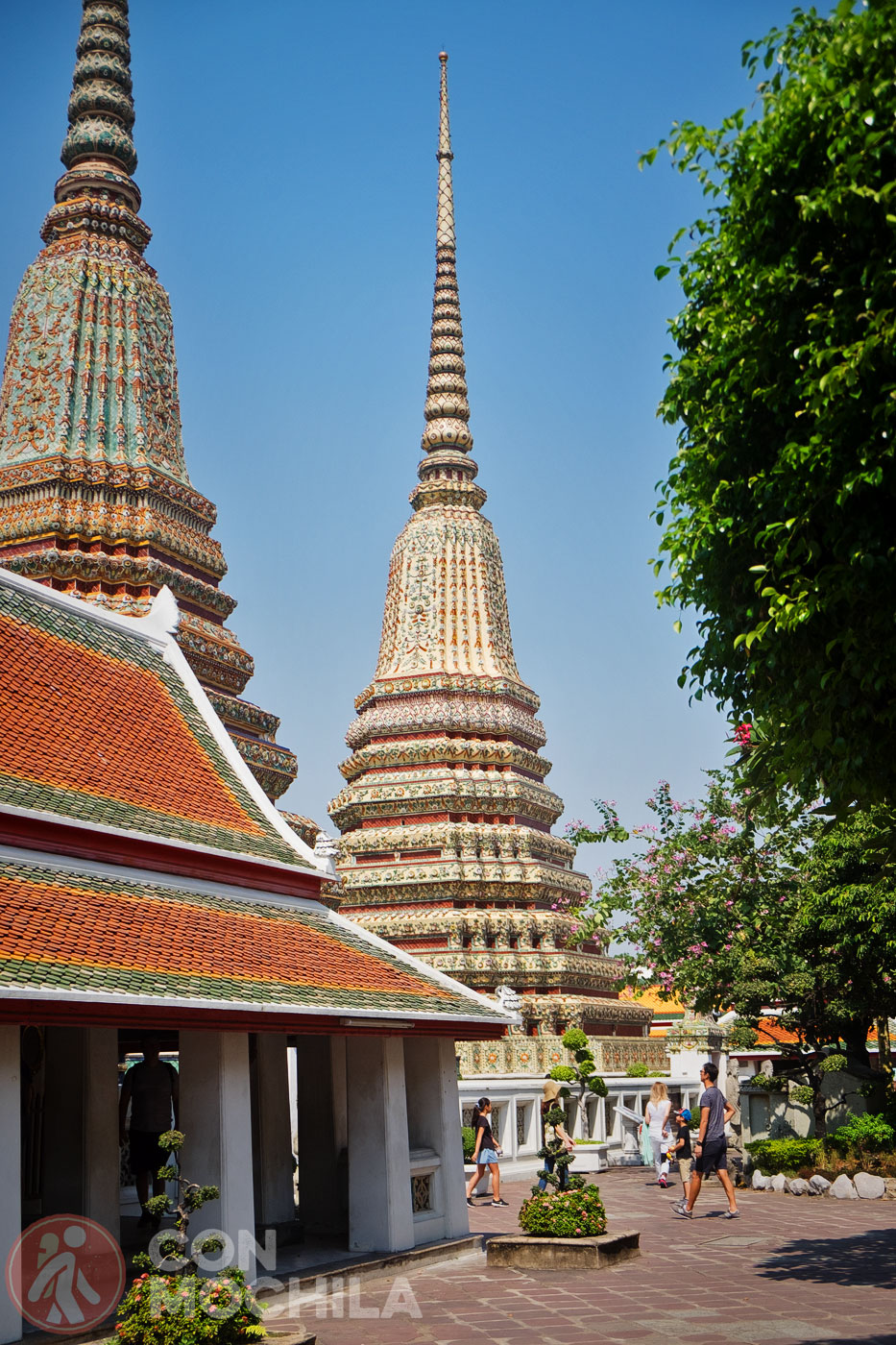
If you continue walking around the grounds, you will pass the massage room where classes are taught, you will pass by a traditional medicine school (it is a centre for teaching and preserving traditional Thai medicine), the Misakawan Garden, the Crocodile Pond and the Wat Phra Chetupon Institute, all the way dotted with small stupas with beautiful decorations (91 in total).
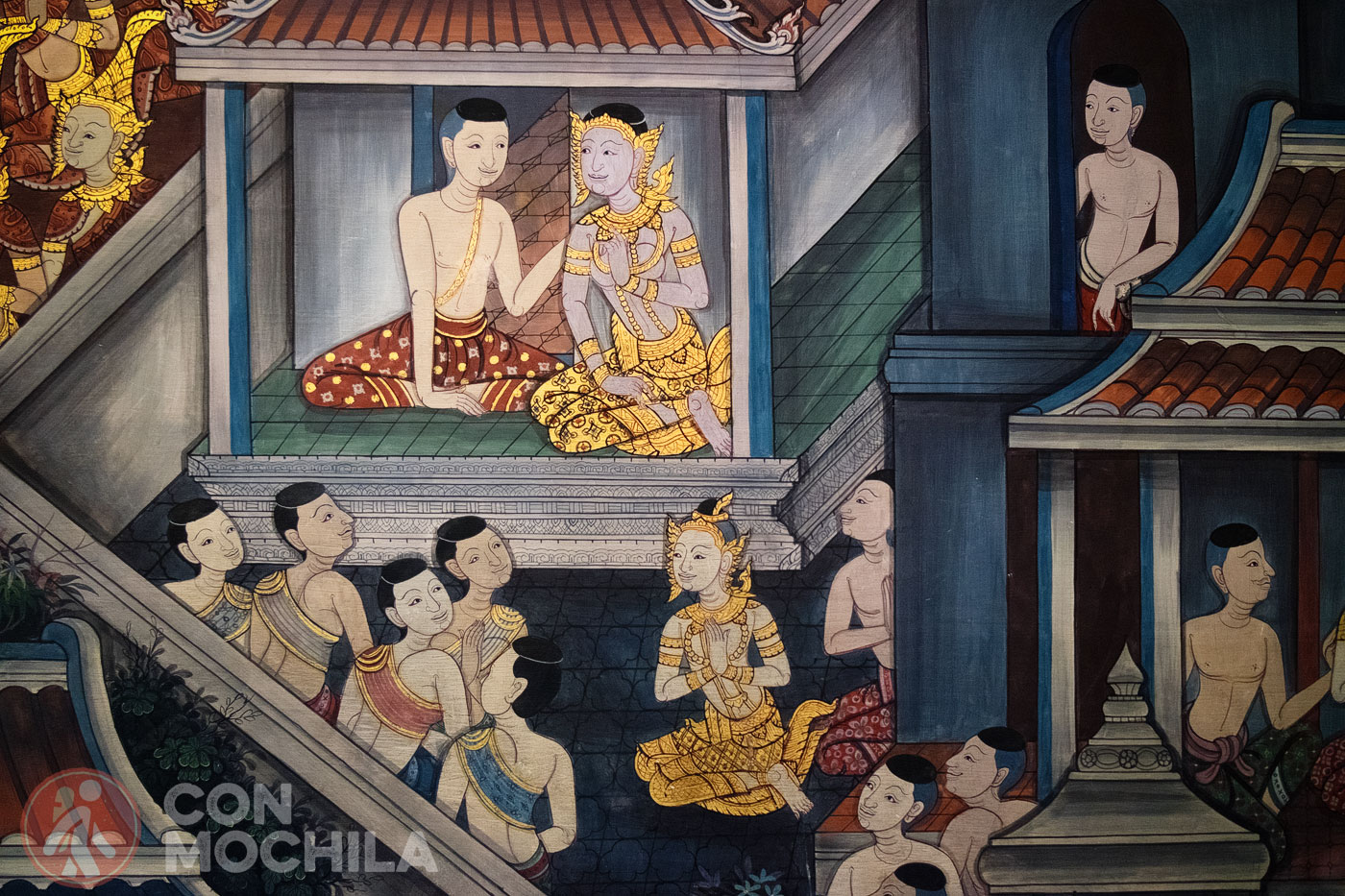
And inside another wall is the Phra Ubosot or main chapel. Huge, right? Do you know how many doors the compound has? 16, but only 2 of them are open to the public.
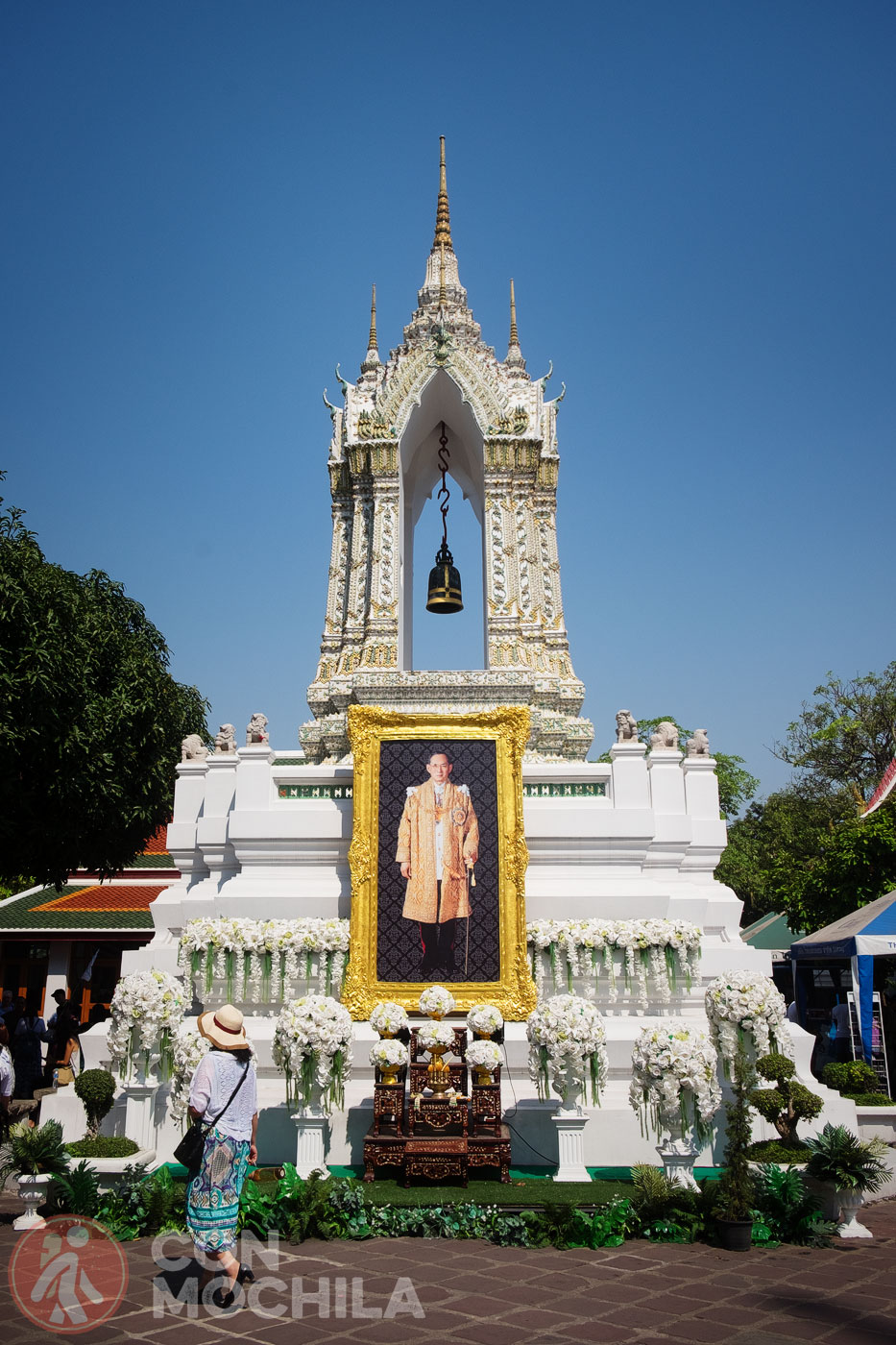
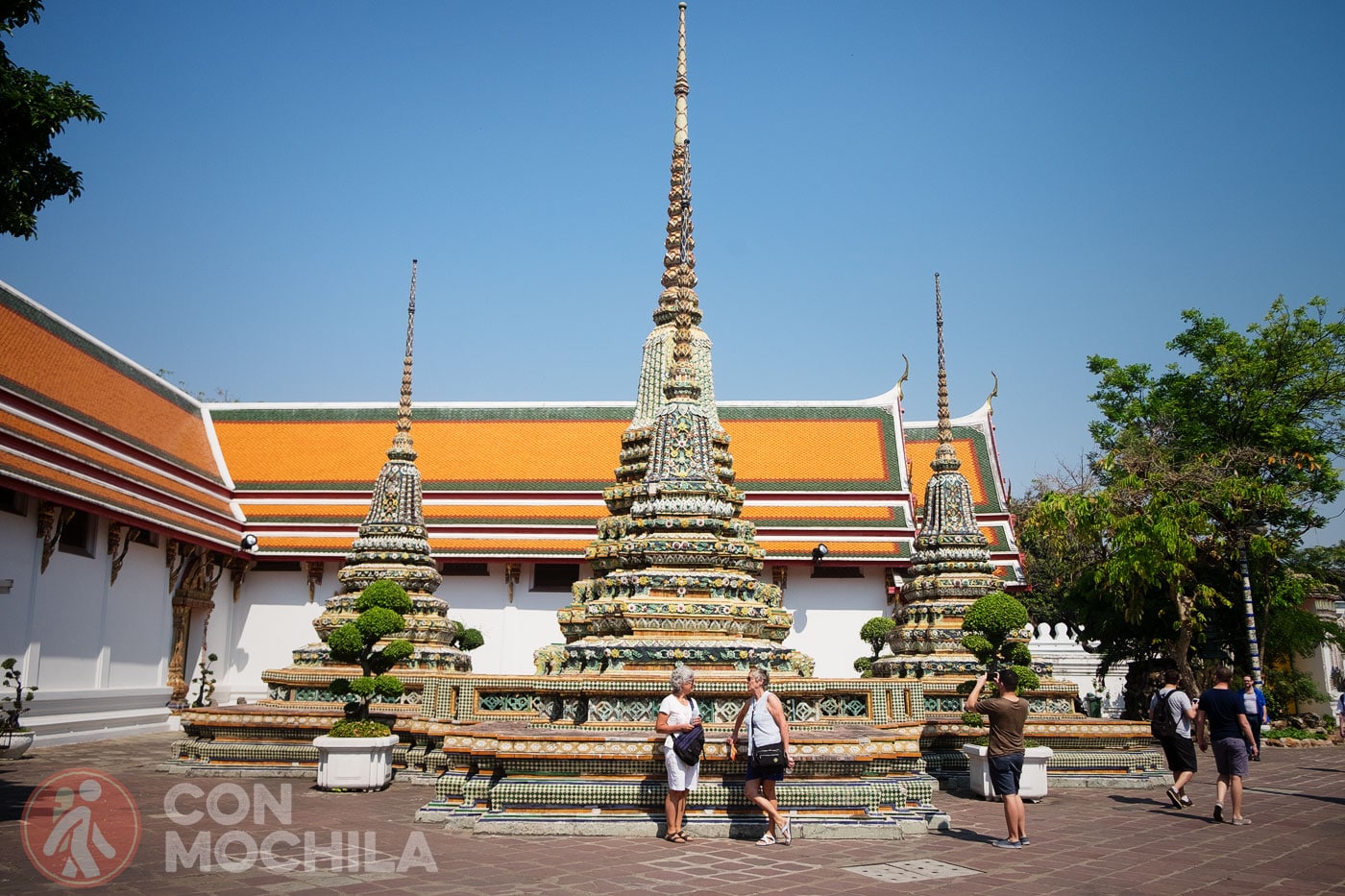
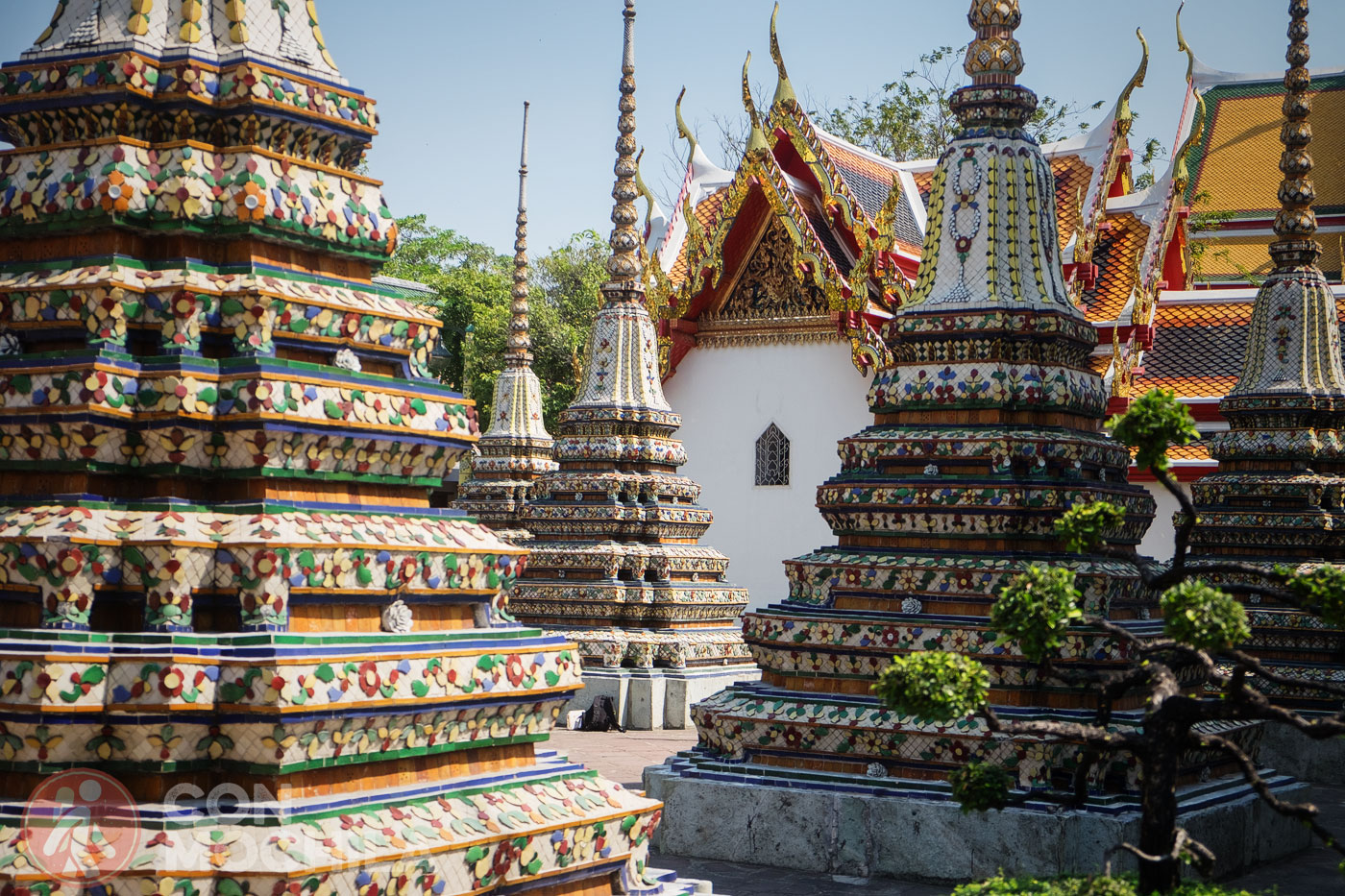
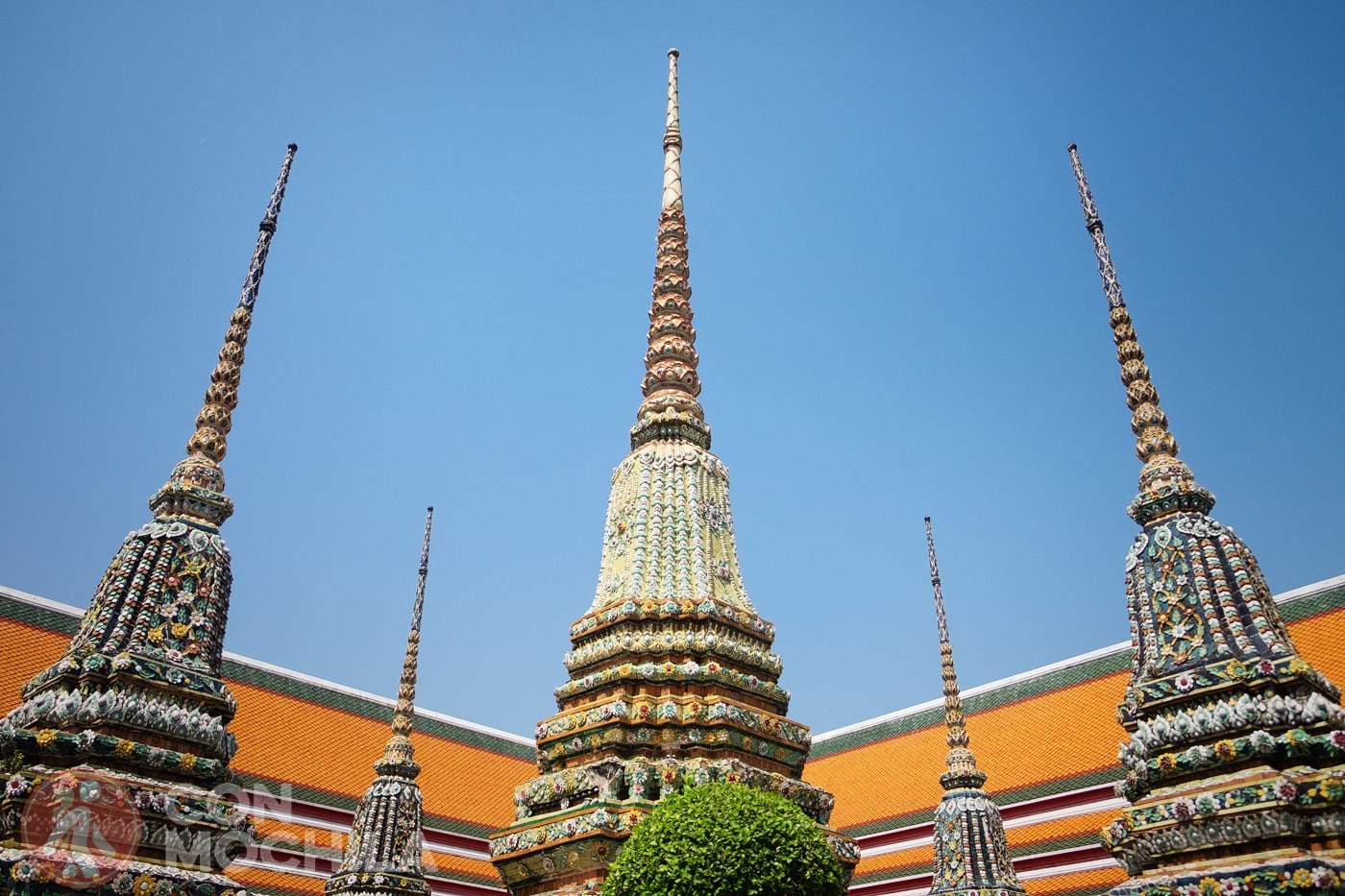
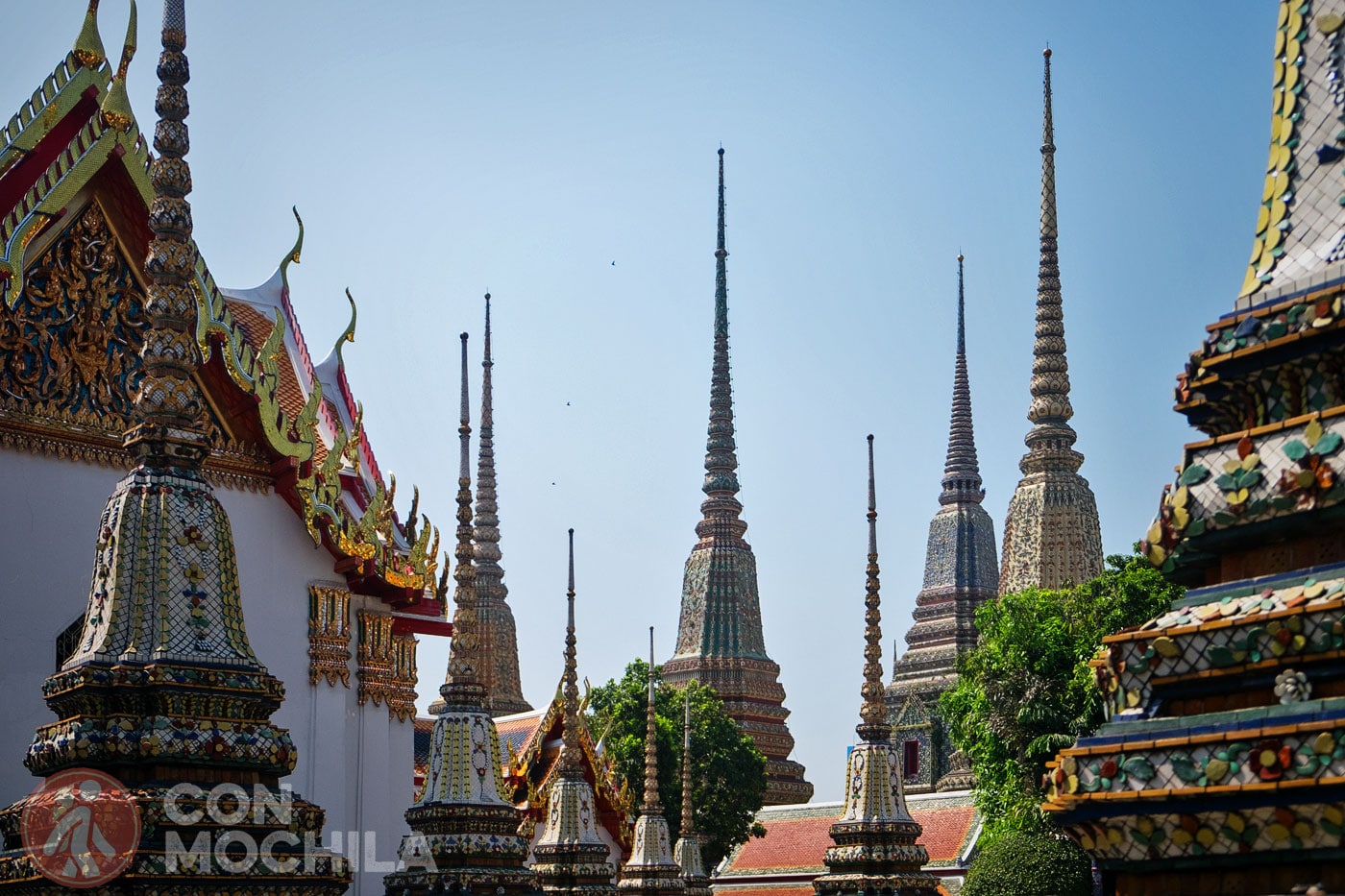
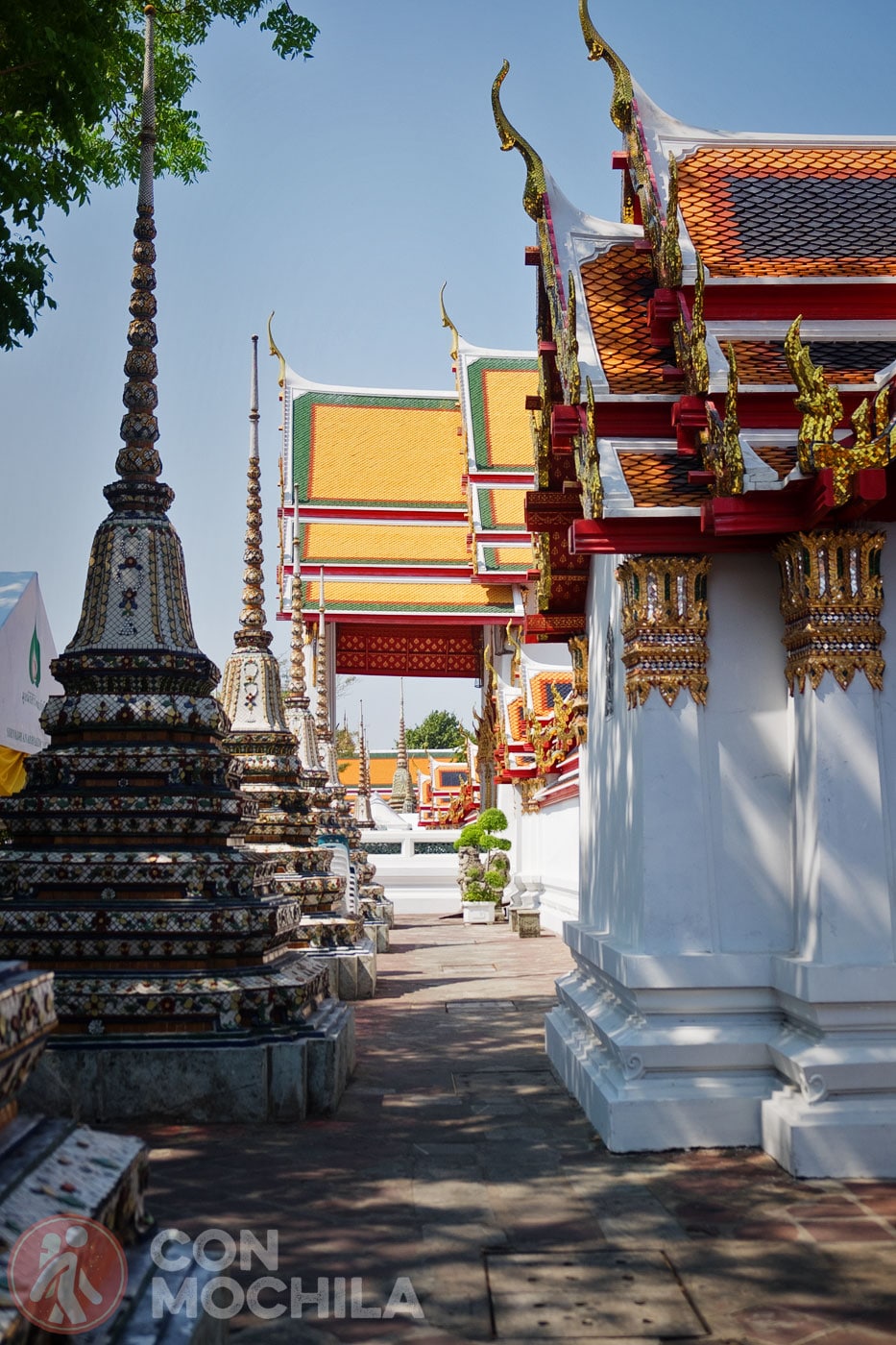
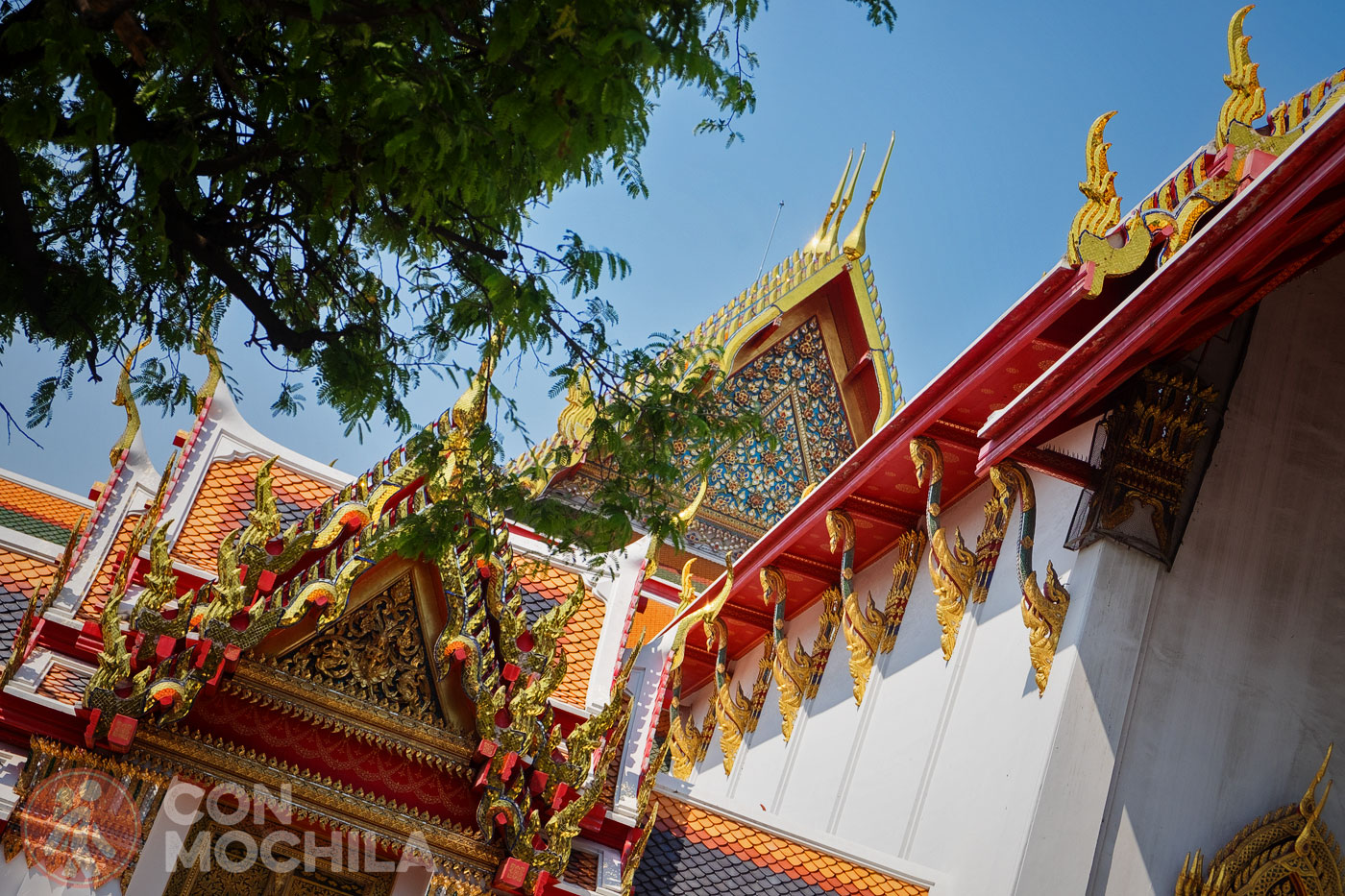
The many small details of the monastery are very striking, but above all the different figures that decorate it, including the giants of Wat Pho located at the entrance of the library and the Chinese statues at the entrance doors.
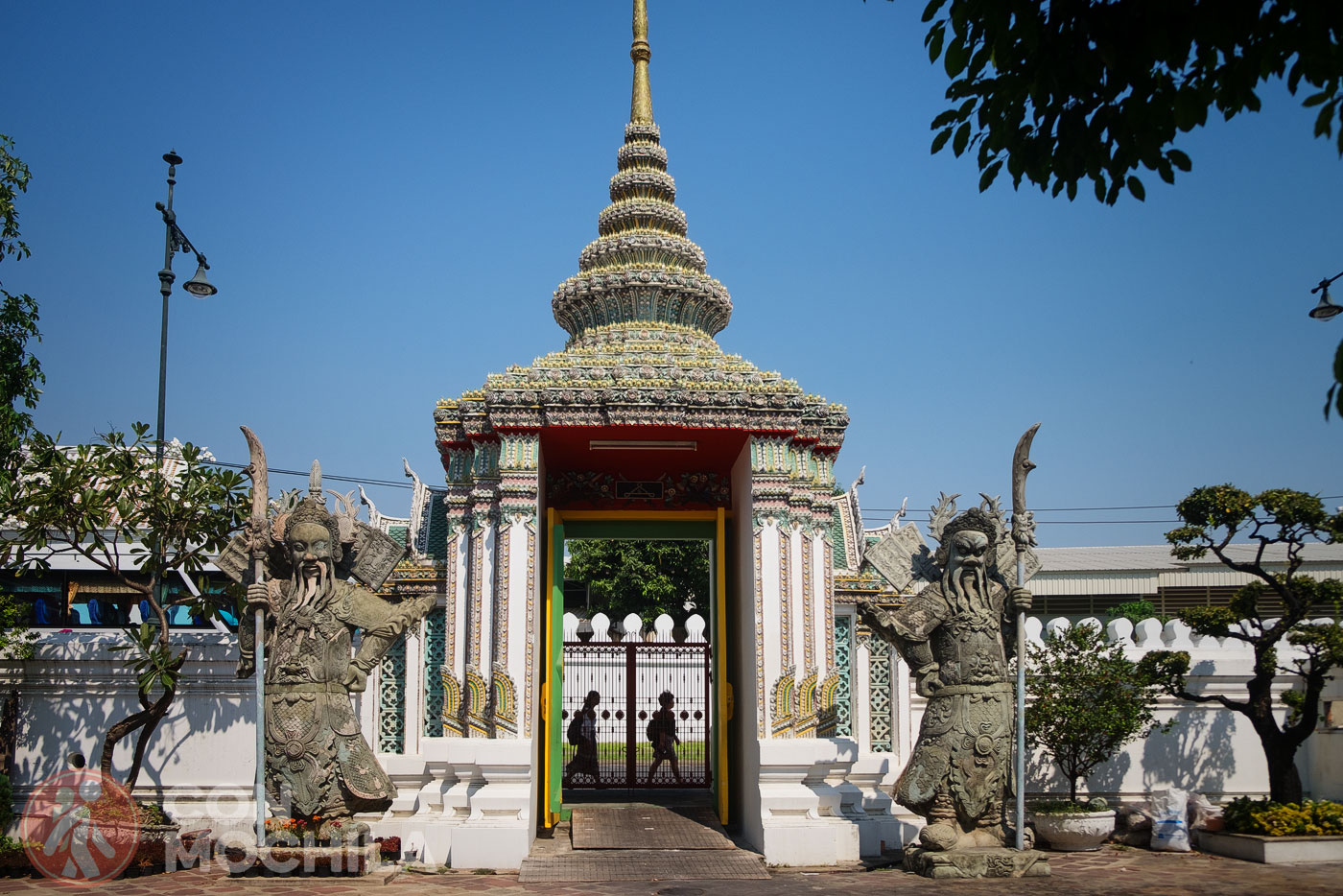
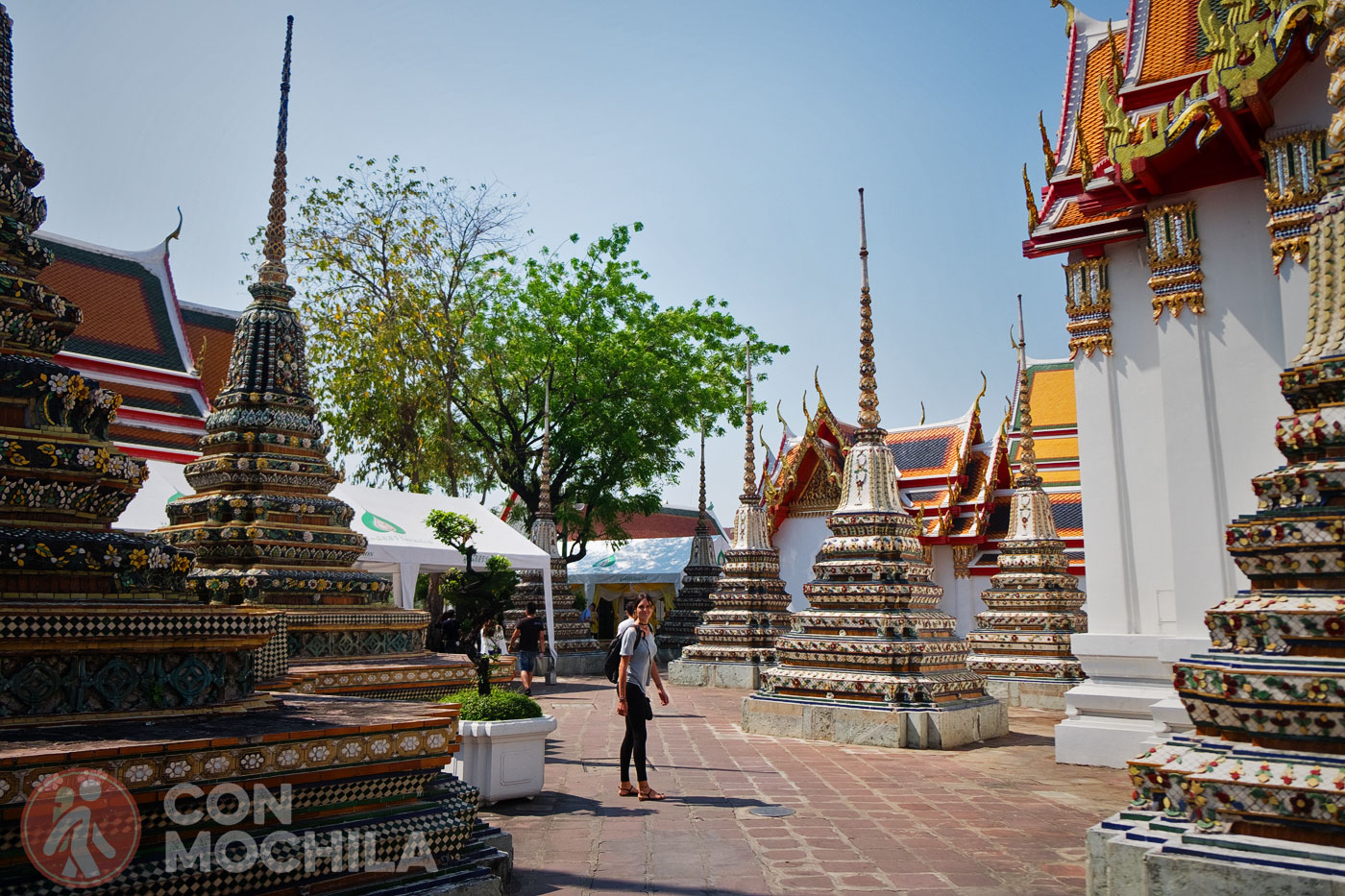
Did you like the photos? We highly recommend that, if you are looking for places to see in Bangkok, you do not miss visiting Wat Pho before or after passing by the Grand Palace, as they are very close to each other.
We have been there on several occasions, as whenever someone came to visit us in Thailand we took them to see the Big Buddha; everyone was equally surprised.